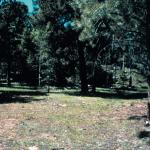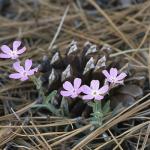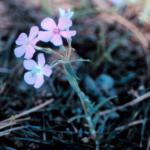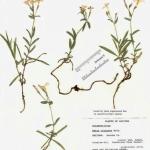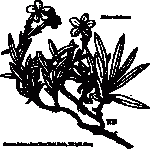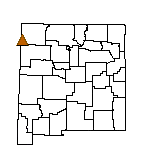Phlox cluteana (Navajo Mountain Phlox)
Family
POLEMONIACEAE
Synonyms
NONE
Common Name
Navajo Mountain Phlox
| USFWS | State of NM | USFS | BLM | Navajo Nation | State Rank | Global Rank | R-E-D Code | NMRPTC Status | Strategy Status |
|---|---|---|---|---|---|---|---|---|---|
| SNR | G3 | 1-1-2 | R | SS |
| Overall Conservation Status | Documented Threats | Actions Needed |
|---|---|---|
| WEAKLY CONSERVED | No Information |
Data exchange with NNHP. Document threat impacts |
Description
Perennial with slender, creeping rhizomes; stems mostly 8-10 cm long, sparsely to densely glandular pubescent; leaves evergreen, 1-4 cm long, entire, linear to narrowly lanceolate or elliptic, glabrous to ciliate or sometimes pubescent like the stems; inflorescence of short, terminal cymes; pedicels 3-15 mm long; flowers large and showy, light pink to purple; calyx 6-8 mm long; corolla tube 8-18 mm long, the lobes 8-10 mm long and nearly as wide, rounded at the apex; stamens included or slightly exserted. Flowers June to July.
Similar Species
Phlox amabilis and P. longifolia have taproots and usually deciduous leaves, whereas P. cluteana has a slender rhizomatous rootstock and evergreen leaves.
Distribution
New Mexico, San Juan County, Chuska Mountains; adjacent northeastern Arizona; Utah, San Juan County, Navajo Mountain.
Habitat
Light to heavy shade on sandy soils in ponderosa pine forest; 1,800-3,000 m (6,000-10,000 ft).
Remarks
Phlox cluteana can be locally abundant within its limited range.
Conservation Considerations
The effects of logging and forest fire on Phlox cluteana have not been evaluated.
Important Literature
Kearney, R.H. and T.H. Peebles. 1960. Arizona flora (with supplement). University of California Press, Berkeley.
McDougall, W.B. 1973. Seed plants of northern Arizona. The Museum of Northern Arizona, Flagstaff.
Phillips A.M., B.G. Phillips and N. Brian. 1982. Status report: Phlox cluteana. Unpublished report to the U.S. Fish and Wildlife Service, New Mexico Ecological Services Field Office, Albuquerque.
Information Compiled By
Daniela Roth 1999
For distribution maps and more information, visit Natural Heritage New Mexico


